Discover how to estimate the quantity of yarn needed for crafting a crochet blanket, ensuring you have sufficient material for your project without surplus.
Determining the amount of yarn you’ll need for a crochet blanket depends on several factors, including the blanket size, the stitch you’re using, the thickness of the yarn, and the hook size.
For example, a baby blanket made with a simple stitch using medium-weight yarn and a size H-8 (5mm) crochet hook could require around 1,000 yards of yarn, while a larger throw blanket might need upwards of 3,000 yards.
This article will delve into the specifics of these factors, providing a comprehensive guide to help you accurately estimate the yarn quantity for your next crochet blanket project.
Key takeaways:
- Estimate yarn needed based on blanket size, stitch, yarn thickness, and hook size.
- Choose the right crochet blanket size based on purpose.
- Different crochet blanket sizes: baby, receiving, lapghan, throw, single/twin bed, double/queen bed.
- Understand yarn weight and its impact on quantity required.
- Consider stitch type and its effect on yarn quantity.
Choosing the Right Crochet Blanket Size
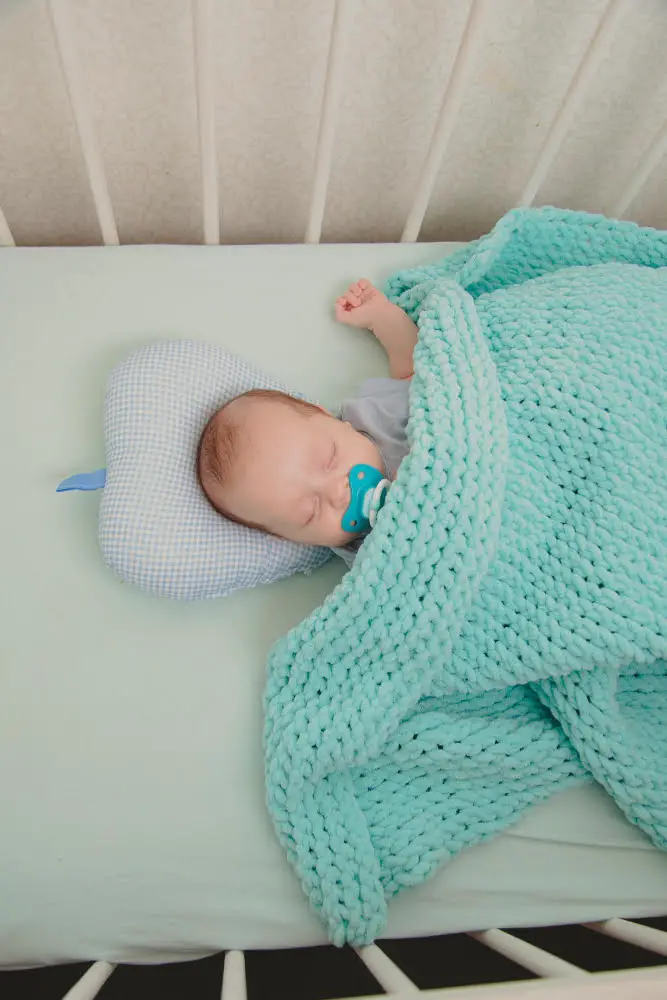
To select the perfect size for a crochet blanket, understanding its purpose is key.
Blankets for baby cribs should ideally be around 36” x 54”, while blankets for toddler beds may need to be slightly larger, perhaps up to 42” x 52”.
If the crochet blanket is for a couch or throw blanket, sizes usually vary between 50” x 60”, for a small couch blanket, to 60” x 80” for a larger throw.
For bedspreads, the size will depend on the actual size of the bed. For a twin-sized bed, aim for a 68” x 86” blanket; a queen-sized bed will require a blanket closer to 90” x 100”, and for a king-sized bed, consider making a blanket around 108” x 90”.
Remember, these dimensions are just a starting point. Feel free to adjust the size based on personal preferences and needs. Keep in mind that larger blankets require more yarn than smaller ones. Moreover, the chosen stitch and type of yarn will also impact the quantity of yarn required.
Most Common Crochet Blanket Sizes
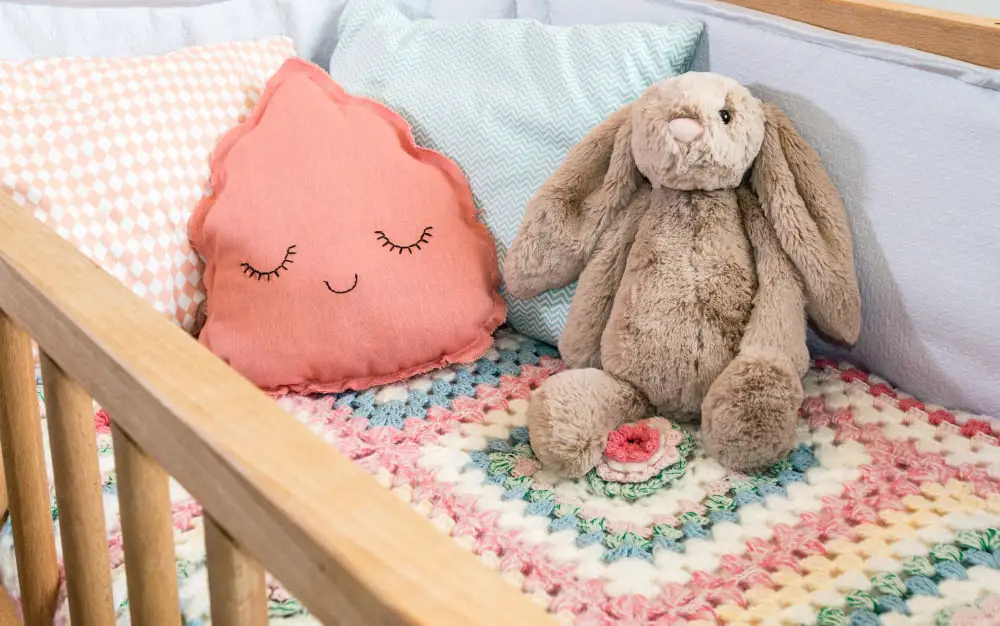
When considering which size to make your blanket, there are several standard dimensions to keep in mind. These measurements can serve as a great starting point for your project and help you decide how much yarn to purchase.
- Baby Blankets typically measure around 30×35 inches, just right for wrapping up a little one or providing a cozy layer in a crib or stroller.
- Receiving Blankets are usually square with a dimension of about 40×40 inches, giving ample room for swaddling and snuggling.
- A Lapghan, designed to cover laps and legs while sitting, typically ranges from 36×48 to 48×48 inches.
- For a Throw Blanket, used for napping or small enough to toss on the couch, aim for dimensions around 52×60 inches.
- Single/Twin Bed Blankets often measure 70×90 inches, perfect for topping a single or twin-sized bed.
- Double/Queen Bed Blankets are larger, around 90×108 inches, suitable for covering a double or queen-sized bed.
Remember, these are just a guide, and the exact size of your blanket can be tailored to your personal preference or the recipient’s needs.
Crochet Baby Blanket Sizes
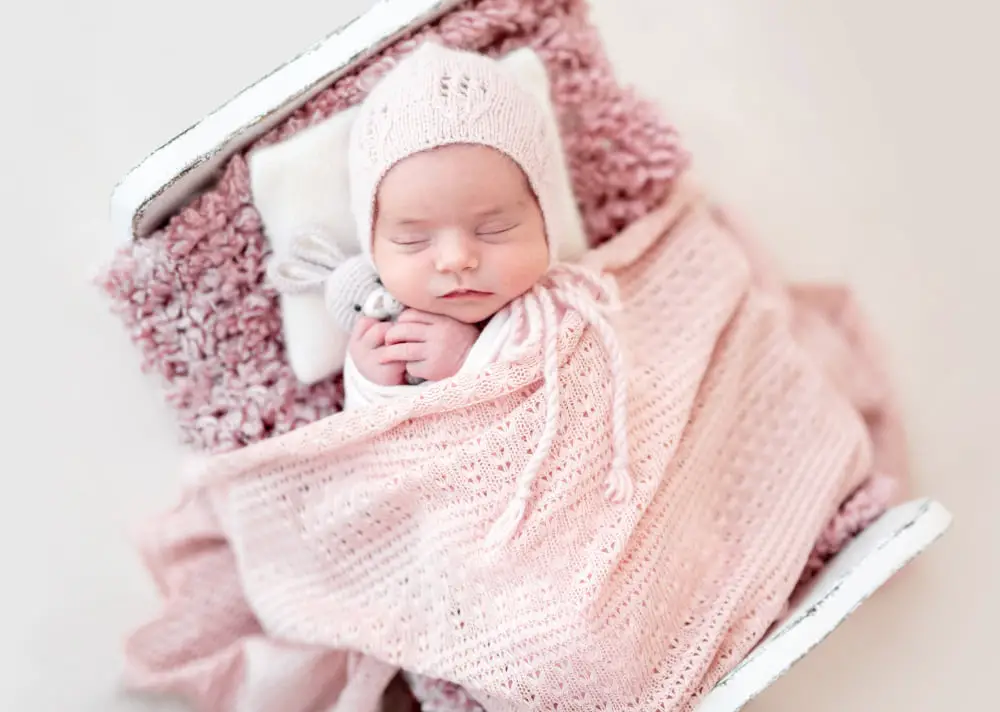
A baby blanket is a cherished keepsake for many parents, and the right size can ensure its usefulness from newborn to toddler years. Typical measurements fall within a range that caters to various needs such as swaddling, providing warmth in a stroller, or acting as a plush play mat.
Swaddle blankets are typically square, around 40 to 44 inches on each side. A bit larger than receiving blankets, they provide ample wrapping space for a snug, cocoon-like feel. This size can also be used as a lightweight cover for infants in warm weather.
Receiving blankets often measure about 30 to 34 inches. This size is perfect for a multipurpose blanket that fits well in a crib, serves as a clean surface for diaper changes, or can be used for cover while nursing.
Stroller blankets, in comparison, are a bit smaller, at around 30 by 30 inches. Their size is ideal for tucking around little ones in a stroller without excess material dragging or getting caught in the wheels.
Crib blankets follow a rectangular design, commonly measuring 36 by 54 inches. This size gives more coverage and warmth as the baby grows into a toddler, fitting well within the crib sides and also making a good cover for naps on the couch or carpet.
Remember, there’s always a little flexibility with these dimensions depending on personal preference, yarn used, and stitch density created. Always consider these factors when planning a crochet baby blanket project.
Crochet Couch Blanket Sizes

When it comes to crocheting a blanket for your couch, size matters. First, you need to measure the couch surface. Keep these measurements in mind when choosing your pattern. Depending on style of the couch and personal aesthetic preferences, you can aim for three common sizes: throw, afghan, and oversized.
- A throw is typically around 50 inches (127 cm) by 60 inches (152 cm). This size is perfect for draping over the back of the couch or for one person to snuggle under.
- An afghan is more substantial, typically measuring 50 inches (127 cm) by 65 inches (165 cm). It’s a versatile choice as it can cover the entire seating area of the couch and is sufficient to keep two people warm.
- An oversized couch blanket is great when you want something that delivers a luxe, ample feel. They’re usually around 60 inches (152 cm) by 80 inches (204 cm) and can envelop the whole couch.
Adjust these dimensions as needed, based on the couch and the intended use of the blanket. For instance, if you wish to create a blanket as a protective cover for the couch, measure the couch’s length, width, and height to ensure adequate coverage.
Keep in mind the impact of size on yarn quantity. The larger the blanket, the more yarn you’ll need. Make a rough estimate based on the blanket dimensions and yarn weight, adjusting for more textured or ‘yarn-eating’ stitches, if that’s part of your pattern. Into the bargain, consider the impact size might have regarding portability and project timeframe.
Crochet Bedspread Blanket Sizes
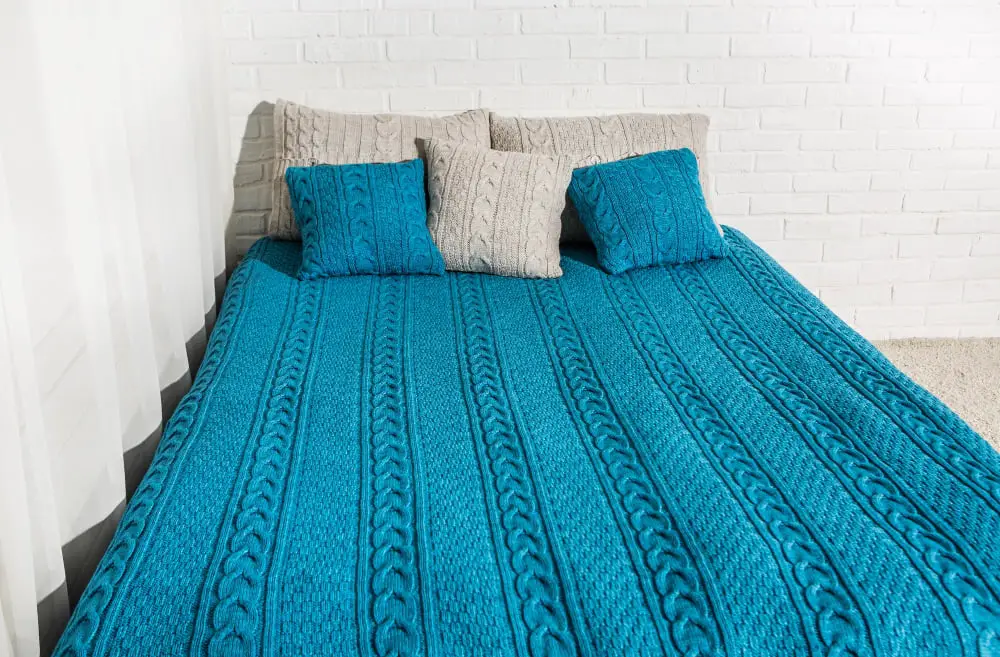
A bedspread blanket designed for a Twin sized bed typically measures around 66 x 90 inches. Aim for 68 x 86 inches for a Full or Double bed and allot 80 x 90 inches for a Queen sized bed. King sized beds require larger blanket dimensions, typically 102 x 90 inches.
Selecting the correct size is essential in achieving the comfort level you desire in conjunction with a pleasing appearance on the bed. Remember that dimensions can vary depending on personal preference and the style of the blanket, some might prefer overhang at the ends and sides of the bed, others might not.
Keep an eye on the pattern you choose; an intricate pattern will demand more adjustments to the blanket’s size. Making a sample swatch before beginning the main project can help ensure you reach the desired final size. Also, consider the yarn’s weight and hook size, as they too can affect the overall dimensions of the completed blanket.
Understanding Yarn Weight and Its Importance
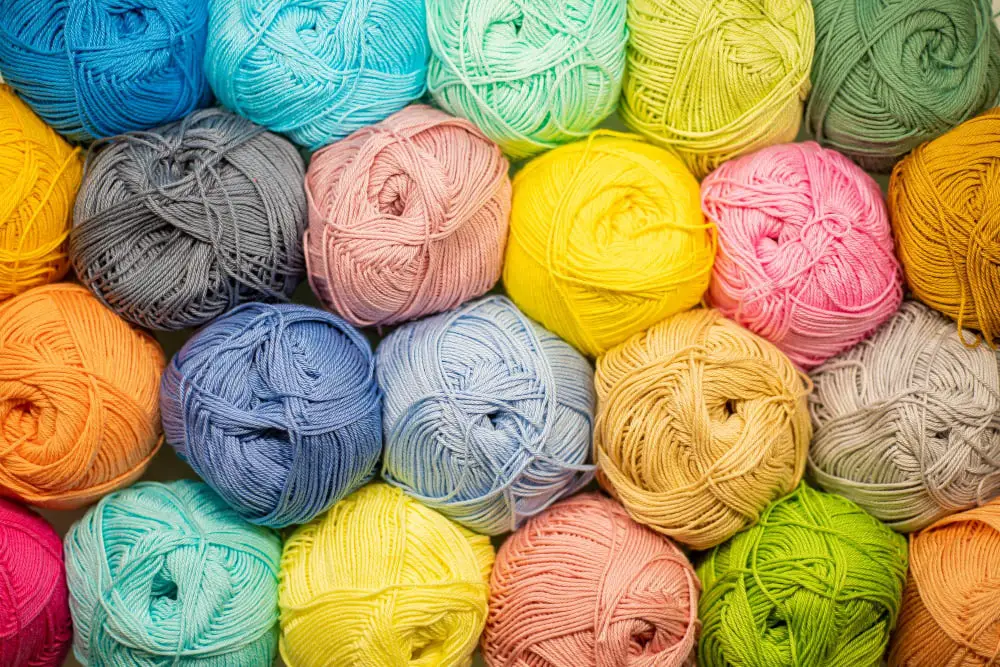
Yarn weight refers to the thickness of a yarn strand that significantly influences the final product’s look, feel, and warmness. Choosing the right yarn weight is essential to achieve the desired effect in a crochet blanket.
Lace yarn is delicate and fine, often used for intricate, delicate projects, not typically used for blankets.
Lightweight or fingering yarn is slightly thicker than lace, suitable for baby blankets.
Sport yarn is medium-weight, versatile, and adaptable to various crochet patterns, makes a good choice for lightweight, breathable blankets.
DK or Light worsted yarn is a bit thicker than sport yarn, it can be used in a variety of projects, including blankets.
Worsted weight yarn is the most commonly used, often used for warmer blankets due to its medium-heavy weight.
Bulky yarn, which includes chunky and super chunky yarns, are perfect for creating warm, cozy, and textured blankets quickly due to their thickness.
The importance of understanding yarn weight lies in its ability to influence three key aspects: the gauge (number of stitches per inch), the drape (how the blanket hangs), and the feel of the blanket (softness, warmth, heaviness). Different weights also mean differing amounts of yarn required for your blanket, so understanding this will guide you in buying the correct amount of yarn.
Types of Yarn: Ball / Skein Length

Yarn often comes in two main forms — ball and skein. While their contents might be identical in composition, their lengths can differ, which directly accounts for how much yarn will be needed for a crochet blanket.
With a ball of yarn, the yarn is wound into a compact sphere, with a visible outer layer. The length of yarn inside a ball can vary greatly, depending heavily on the weight and thickness of the yarn.
Skeins, on the other hand, are typically oblong and loosely wound, often appearing larger than balls. Like balls, the length of yarn in a skein can also vary based on the yarn’s weight and thickness.
It’s vital to read the product label for both balls and skeins, as they provide information about the length of the yarn. This length is generally measured in yards or meters.
For any crochet blanket project, keep in mind that thicker yarns generally have shorter lengths per ball or skein, while thinner yarns provide longer lengths. This can greatly affect the total number of balls or skeins needed for your blanket.
Consider checking an online yarn calculator once you’ve selected your blanket size, yarn weight, and stitch type. These calculators can give you a relatively accurate estimate of the amount of yarn you’ll require.
Lastly, it’s always recommended to keep an extra ball or skein on hand. Despite accurate calculations, unexpected factors like alterations in the stitch pattern or misestimation of yarn length can lead to shortages. Kitchen scales can be quite handy for measuring the amount of yarn left in a partially used ball or skein.
Effect of Yarn Weight On Quantity Required
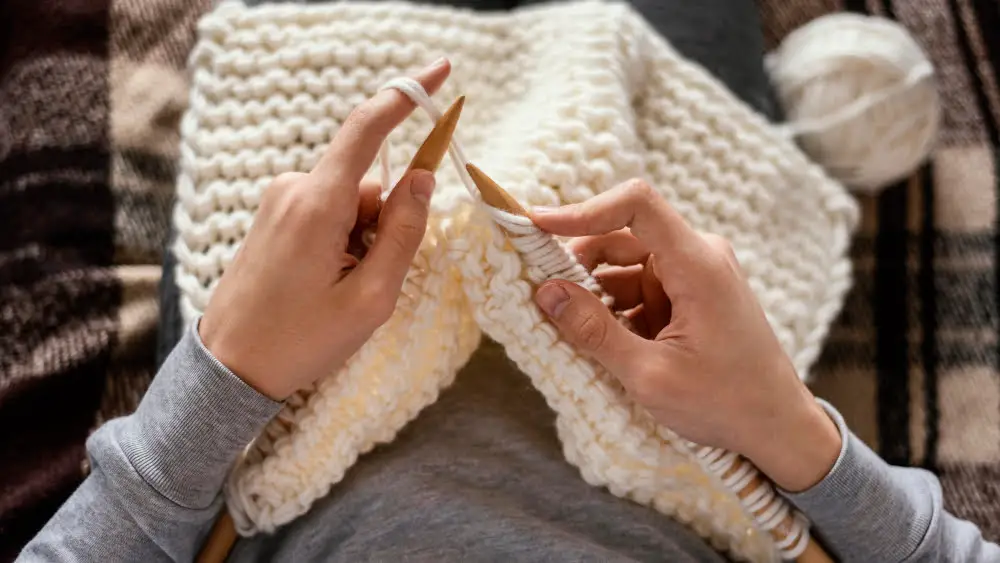
Understanding yarn weight’s influence on the required quantity is imperative. Different weights of yarn result in different quantities necessary for a blanket, due to thickness and overall length provided per ball or skein of yarn.
The lighter and thinner the yarn, such as lace or fingering weight, the more yardage it will contain in a single ball, meaning fewer balls may be necessary for a small to medium blanket.
Medium weights, like DK or worsted weight yarn, offer a balance between thickness and yardage, often providing around 200 yards per 100g skein.
Bulky or super bulky yarns, which are thick and cozy, often come in shorter lengths per skein due to their thickness. Consequently, they require more balls or skeins to complete a blanket of the same size.
Even when using the same blanket pattern, altering the yarn weight used can dramatically affect how much yarn is needed. It’s essential to consider the yarn weight when budgeting for a crochet blanket project. Ensure you always purchase a little extra to accommodate for any miscalculations or potential mistakes.
Impact of Stitch Type On Yarn Quantity
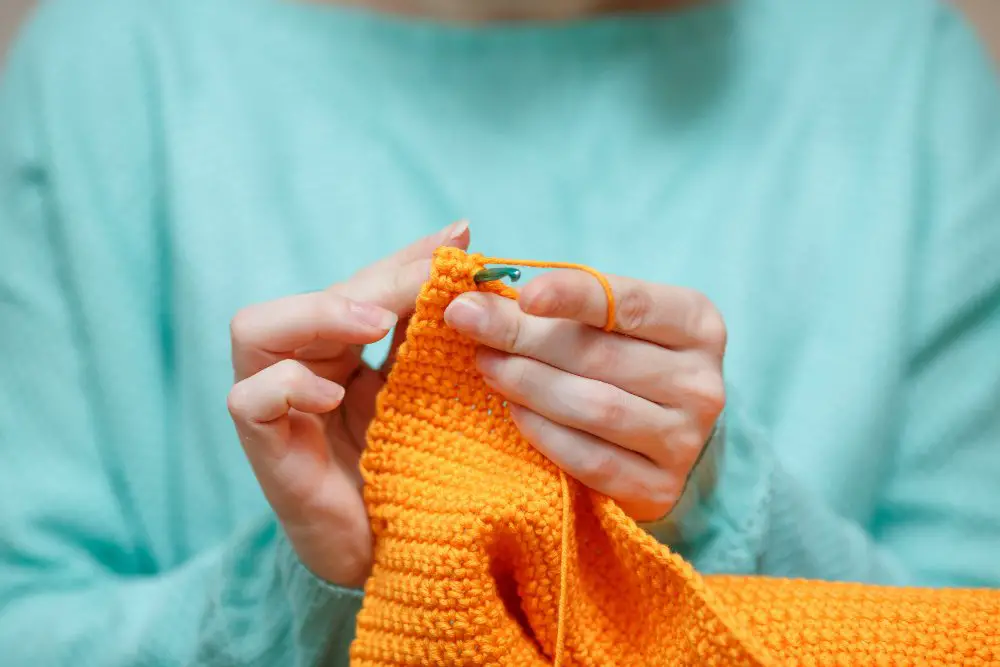
Different crochet stitches can impact the amount of yarn required. Typically, more complex stitches, often referred to as “yarn-eating” stitches, consume additional yarn.
Here are some key points to consider:
- Single Crochet Stitch: This simplest crochet stitch uses the least amount of yarn.
- Double Crochet Stitch: It requires roughly 20% more yarn than the single crochet stitch.
- Treble Crochet Stitch: This stitch uses approximately 40% more yarn than the single crochet stitch.
- Shell Stitch: With its complex pattern, it’s a heavy consumer of yarn. Plan a larger yarn stock for blankets utilizing this stitch.
- V-stitch: This stitch isn’t as demanding as the shell stitch but requires more yarn than basic stitches.
- Bobble Stitch: This stitch creates a textured surface, which uses up more yarn.
Keep in mind the yarn volume needed is inversely proportional to the stitch height. That is, the taller the stitch, the less quantity of yarn per square inch. However, this also gives a lacier blanket.
Using these figures, you can approximate the amount of yarn needed based on your preferred stitch pattern. Always buy a little more yarn than you think you’ll need to allow for potential errors or miscalculations.
Explanation of Yarn Eating Stitches
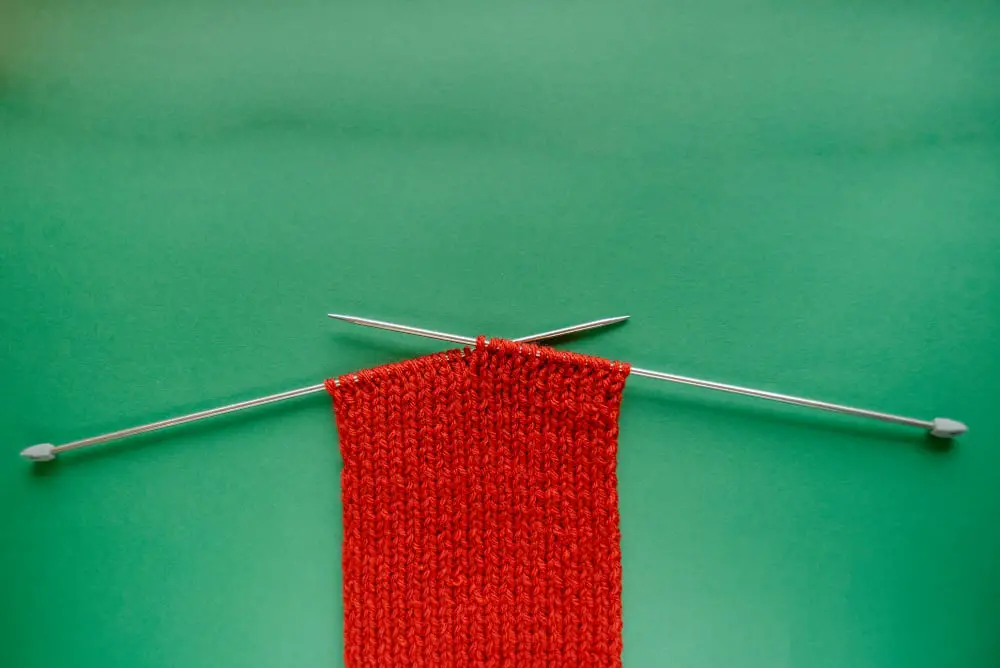
Certain crochet stitches, colloquially referred to as yarn-eating stitches, consume more yarn than others. These stitches include the puff stitch, the popcorn stitch, and the waffle stitch. This is largely due to the increased density and texture they provide.
The puff stitch involves multiple yarn overs, which consume a substantial amount of yarn but produce a beautifully textured, puffy effect.
Creating a popcorn stitch requires you to make five double crochets into the same stitch, then removing your hook and inserting it into the first of the five double crochets to form a 3D texture: this process takes a fair amount of yarn.
The waffle stitch, named after its resemblance to a breakfast waffle’s appearance, includes a series of double crochets and front post double crochets. This stitch’s raised appearance is delightful, but it requires significantly more yarn than simpler stitches.
Keep in mind that these stitches can quickly use up your yarn stash, so consider their impact when calculating how much yarn you’ll need for a blanket. The extra texture and detail they provide, though, can be well worth the extra yarn. Carefully gauging your project based on stitch selection can help ensure you have enough yarn for completion without unnecessary overages.
How to Determine Yardage for a Blanket

To calculate yardage, consider both the size of your blanket and the stitch you’ll employ. The more complex the stitch, the more yarn you’ll need.
Begin by crocheting a gauge swatch. This small material sample helps to determine the number of stitches per inch and rows per inch.
Measure the swatch to find out the number of stitches that fit into one inch. Following that, find the number of rows that make up one inch.
Next, calculate the area of your intended blanket size in inches. For instance, if your blanket is going to be 36″ x 36″, the total area will be 1296 square inches.
Use the stitch count from your swatch to calculate the total number of stitches in your blanket. Multiply this by the yarn used per stitch to get the total yardage.
Don’t forget to consider the type of yarn you’re using. Different weights and thicknesses will alter the yardage.
Also, account for extra yarn for a border, if applicable. You should add an additional 10-15% of your total yardage estimate for this aspect.
Lastly, always buy a little extra yarn than your calculation. It can account for errors or issues that may arise in your project. Plus, it’s better to have leftovers than to run short.
Using Gauge to Calculate Yarn Needed for a Blanket

Gauge is an essential component when determining the amount of yarn needed. It refers to the number of stitches and rows per inch a certain yarn will yield using a specific crochet hook. Here’s how to use it to calculate yarn for a project:
First, crochet a small square (around 4×4 inches) using the stitch pattern and hook size recommended for your blanket.
Count the number of stitches across and rows up to measure the square inch.
Next, calculate the total number of square inches in your blanket by multiplying the width by the length.
Finally, use these figures to calculate the total yarn needed. For example, if your gauge square used 20 yards of yarn, and your blanket is 500 square inches, you’ll need 500/4 (the size of your square) multiplied by 20 yards, equating to 2500 yards of yarn.
Keep in mind that this estimate is not absolute; always buy more yarn than calculated. Factors like stitch tightness and pattern intricacies can impact the final yarn quantity required.
Don’t forget to consider the yarn weight. The same blanket made in a finer yarn will take more yardage than one worked in a thicker yarn. Check the yarn label for gauge information to help with these calculations.
Choose your pattern carefully. Different patterns will require different amounts of yarn even if they use the same stitch. A simple double crochet blanket will use less yarn than a complex cable stitch blanket.
Remember, having an understanding of gauge is not just beneficial for calculating yarn but also in achieving the right size for your blanket. Despite this, yarn calculations remain an estimate, so err on the side of caution. More often than not, it’s safer to have too much yarn than too little.
Helpful Yarn Buying Tips
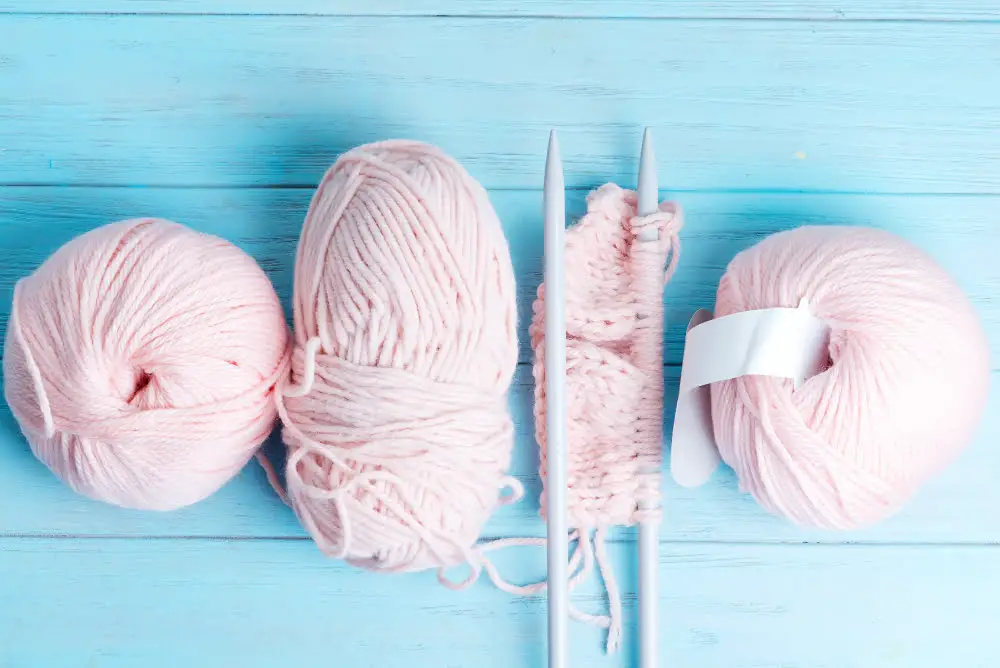
When buying yarn for a crochet blanket, consider the following aspects to make the most informed decision:
Understanding the project requirements is crucial. Check the blanket pattern for the recommended yarn type, weight, and quantity.
The weight of the yarn determines the thickness. Lighter yarns like lace, fingering, or sport weight will create thinner blankets, while heavier yarns such as worsted, bulky or super bulky will result in chunkier blankets.
Keep in mind the texture of the yarn. Soft, plush yarns are ideal for baby blankets or throws, while durable, hard-wearing yarn may be more appropriate for project like a couch cover or a bedspread.
Buying all the yarn you need for the project at once is recommended. This ensures that the dye lot matches across your entire blanket. A different dye lot can result in noticeably different colors.
Remember to consider extra yarn for finishing touches like borders or pattern-defined texture.
Taking note of yarn care instructions is important. Blankets that will be used and washed frequently will need machine-washable yarn.
Lastly, verify if the chosen yarn is easy to work with. Certain yarns can be tricky for beginners due to slipping stitches or difficulty in seeing individual stitches. Softer, smoother yarns are generally easier to work with.
Importance of Blanket Pattern Selection
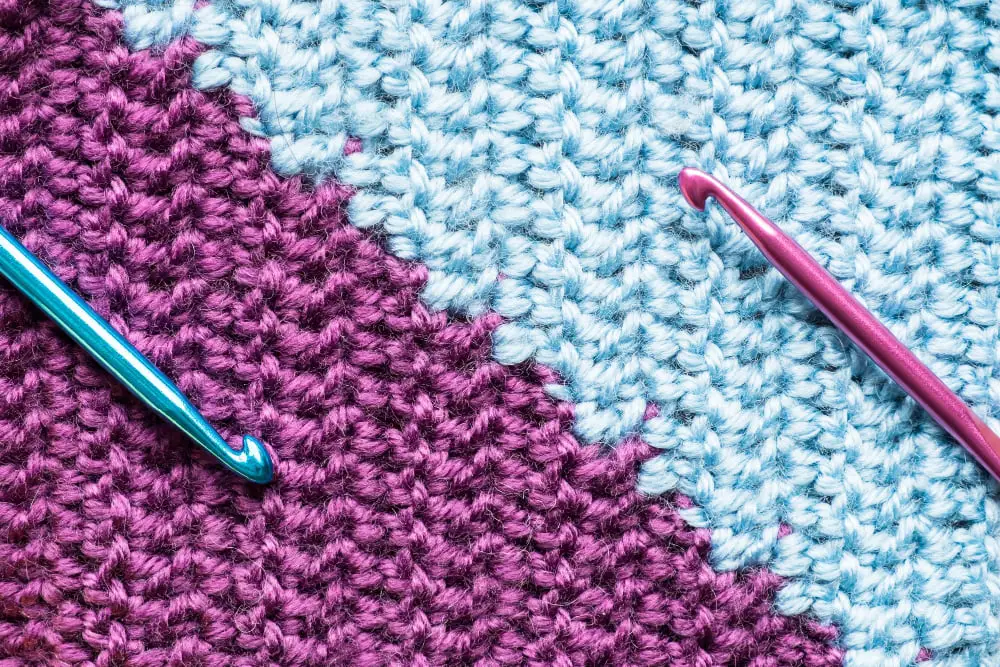
Selection of a blanket pattern is a vital step when preparing to crochet a blanket. Different patterns may require different types of yarn, amounts of yarn, and stitch techniques. A design that matches your crocheting skill level is also crucial, as it determines how manageable the project will be.
Here are some points to note when selecting a crochet blanket pattern:
- Consider the desired finished size of your blanket. So patterns naturally suit larger or smaller blankets.
- Look at the complexity of the pattern. If you are a beginner, opt for simple patterns with basic stitches. Advanced crocheters may enjoy complicated designs with advanced stitches.
- Examine the type of yarn recommended for the pattern. Some patterns may require certain kinds of yarn to achieve the best results.
- Check the yarn weight required for the pattern. This can significantly influence the quantity of yarn needed.
- Pay close attention to the stitch type as this directly affects the amount of yarn usage. Certain stitches, such as bobble stitch or Bavarian square, can use more yarn.
- Inspire yourself with free crochet blanket patterns available on online platforms like Pinterest, Ravelry, and various crochet blogs for ideas.
- Be open to adjusting the pattern to fit your needs. Perhaps you like the stitch in one pattern but prefer the border of another?
Remember, the blanket pattern does not only impact the finished product’s appearance but also the process of crocheting the blanket. It’s also a great way to express your personality and style.
Exploring Free Crochet Blanket Patterns

To get a better grip on determining yarn quantities, free crochet blanket patterns can be an extremely helpful resource. Many of these patterns will provide you with exact figures of yarn quantity required, the weight of the yarn used, and the stitch used.
Browsing through platforms like Pinterest, Ravelry, or even general search engines can bring up a multitude of free crochet blanket patterns. Keep an eye out for patterns that are similar in size and style to the blanket you wish to create.
Make sure to peruse patterns that are listed with dimensions, yarn weight, type, and yardage information. This information tends to be more accurate and useful in estimating yarn needs.
Also, when evaluating these patterns, consider whether or not they include borders. It’s critical to remember that any pattern including a border or fringe will require additional yarn.
Additionally, these patterns can serve as a great inspiration for your own project. Even if you choose to deviate from the pattern, these resources can provide valuable starting points. This is especially valid for determining what kind of stitch you’d like to use or what yarn weight would best suit your needs.
In the end, the aim is to build your confidence in estimating the yarn need for your project so you can purchase with precision and avoid pitfalls of overbuying or running out of yarn.
Remember to save or bookmark these resources for future reference as they could prove invaluable for upcoming projects.
Determining If You Need Blanket Borders
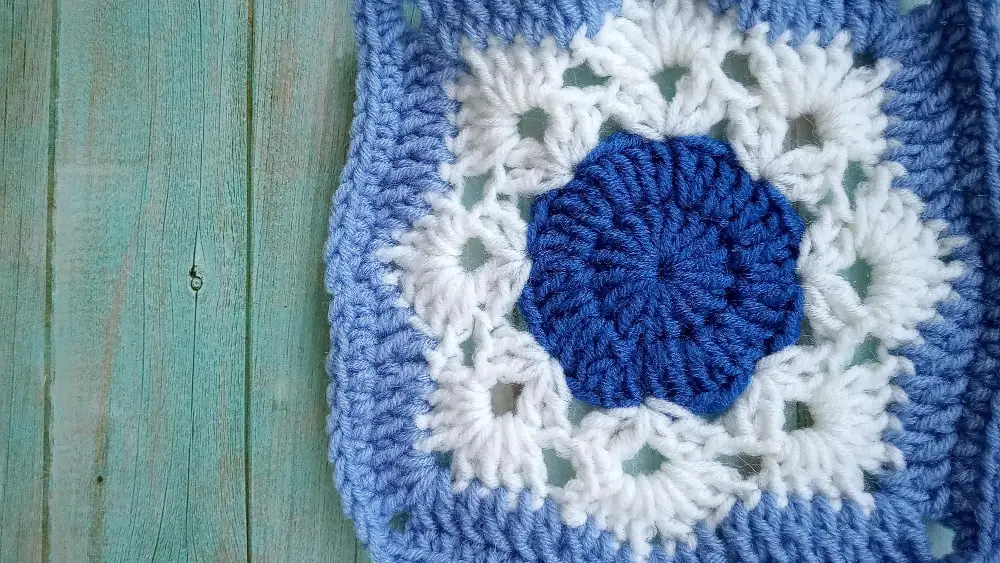
Blanket borders offer the opportunity to add an aesthetic touch, contributing to the overall design and look of your crochet piece. They’re not always necessary, but here are a few things to consider:
The blanket’s purpose: Baby blankets often benefit from a softer, more rounded border, whereas a decorative throw for a couch might look stunning with a fancy, intricate border.
The yarn that you’ve chosen: Thicker yarns may not require a border, as the edges will naturally be more substantial and less likely to curl or fray. Thinner yarns, on the other hand, can benefit from the additional stability a border provides.
The simplicity or complexity of the blanket’s design: A border can offer a nice balance to a blanket with a simpler pattern, adding an element of interest and complexity. On the flip side, if the blanket’s pattern is already quite intricate, a border might be superfluous.
If the crochet blanket is a gift: Consider the recipient’s taste. Some people may prefer a clean-edged look without a border, while others might appreciate the detailed finish a border can offer.
Remember, deciding on whether to add a border largely depends on your personal preference, the intended use of the blanket, and the overall design elements in play.
Insight On Blanket Borders
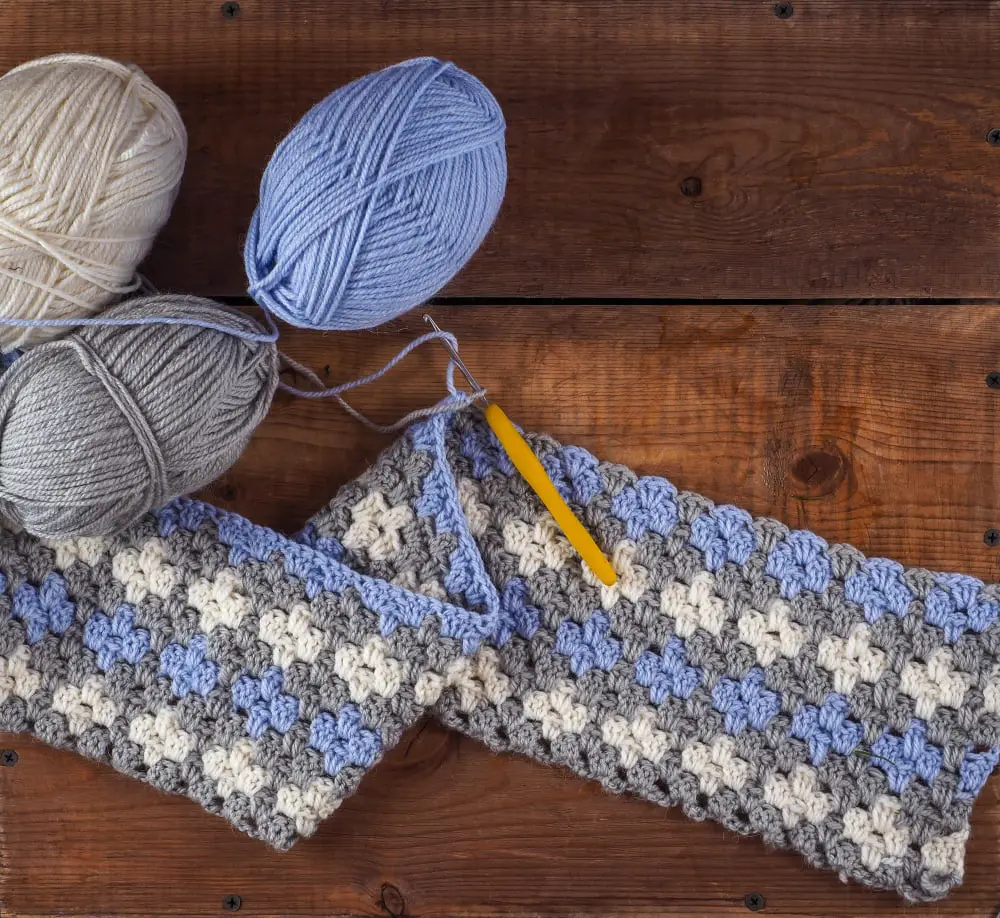
Borders serve a dual purpose for your crochet blanket – first, giving it a finished look, and second, preventing the edges from curling. Here are the key considerations when adding a border to your crochet blanket:
Choose a stitch pattern that complements your blanket’s design. Some popular options include scalloped, crab, or shell.
Your border’s width can vary, but ensure it balances with the main body of the blanket. If your blanket is densely stitched, a narrower border might work best. For lighter, more lacy patterns, a wider border can add needed weight.
Continue with the same yarn type used for the blanket to maintain consistency. However, utilizing a contrasting color for the border can add visual interest and draw attention.
Begin your border at any corner and evenly distribute your stitches around the blanket. Use multiple rounds to achieve the desired border width.
Consider attaching a unique trim for a creative twist. Fringe, pom poms, or even crochet flowers can provide additional personality.
Remember, there’s no right or wrong when it comes to border selection – your choice should reflect your personal style and the look you desire for your finished blanket.
How to Adjust the Size of a Crochet Blanket Pattern
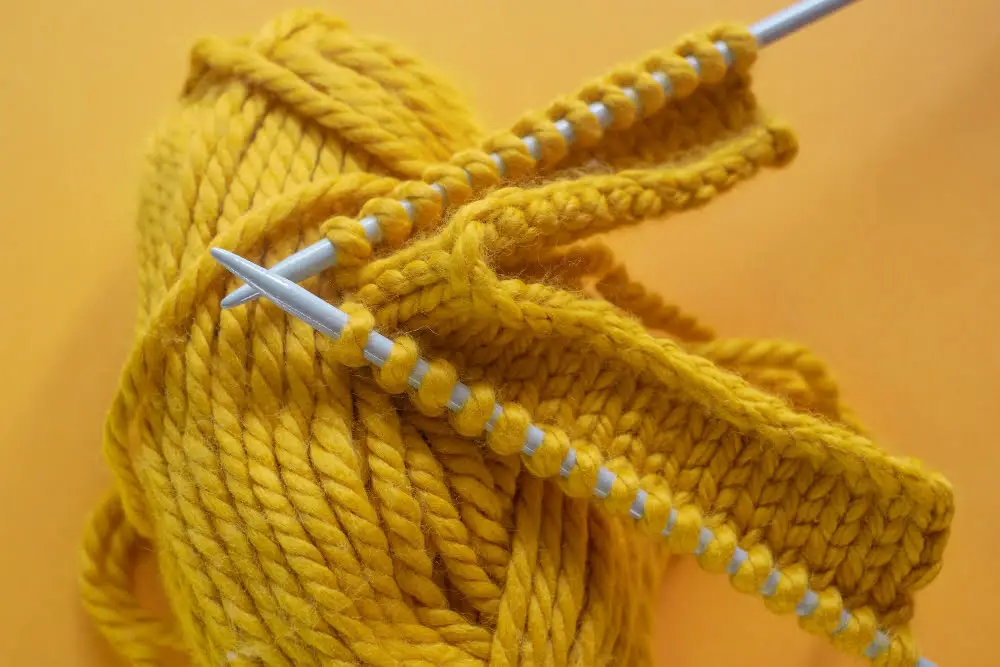
To modify the size of a crochet blanket pattern, you’ll need a solid grasp of basic mathematics and a well-calibrated crochet gauge.
Understanding the pattern repeat is the first key concept. Whether it’s six stitches or fifteen, understanding the length of a pattern repeat keeps the design intact.
Learning how to add stitches evenly across a piece is second. For successful adjustment, add stitches in multiples of the pattern repeat.
Next, remember that any added or subtracted stitches can impact the yarn quantity. Calculate these variations to get an accurate estimate of how much yarn you’ll need.
Marking chain adjustments is included. If the pattern has a foundation chain, this will also need to change in line with the added or subtracted stitches.
Finally, take into consideration the border. If your blanket pattern includes a border, the modifications need to be carried over, since any border will typically follow along the edges of your original pattern.
These concepts, when applied accurately, allow you to customize any blanket pattern size, ensuring you have the perfect fit for your needs.
FAQ
How many skeins of yarn do I need to crochet a full size blanket?
To crochet a full-size blanket, you would need approximately 10 to 18 skeins of yarn, depending on the color variety and pattern complexity.
How much yarn do I need for a 40×60 blanket?
For a 40×60 inch blanket, you will need approximately 7 lbs of yarn.
How much yarn is needed for a full size blanket?
A full-size blanket can require around 900 yards of super bulky yarn or 225 yards with a thinner yarn variety.
How many scans of yarn does it take to make a blanket?
The number of skeins of yarn required to make a blanket typically ranges from 6 to 8, assuming one is using Bernat Big Blanket Yarn.
What is the yarn quantity required for a king size crochet blanket?
A king size crochet blanket typically requires approximately 4,000 to 6,000 yards of yarn.
How does the pattern complexity impact the amount of yarn used for a crochet blanket?
The complexity of a crochet blanket pattern significantly influences the amount of yarn used, as intricate designs often require more yarn due to the increased number of stitches and layers.
How does the yarn weight affect the amount of yarn needed for a crochet blanket?
The yarn weight significantly influences the amount of yarn needed for a crochet blanket as heavier weights require less yarn due to their thickness, while lighter weights need more because they are thinner.
